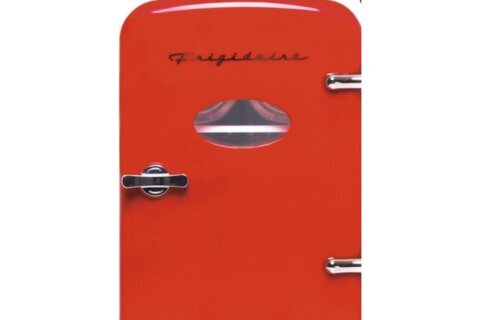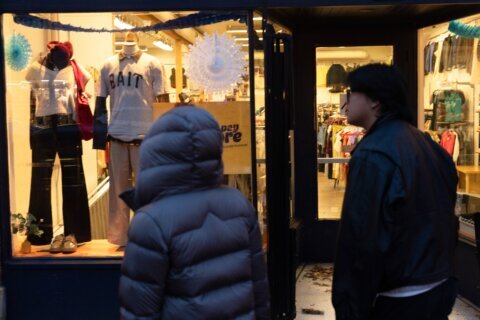This video is no longer available.
Most of us haven’t started our holiday shopping yet, and some of us might not start until the last minute. But when you go looking for deals online, what you think is a steal could leave you robbed.
“It’s a growing criminal global enterprise that totals $2 trillion a year,” said Paul DelPonte, executive director of the National Crime Prevention Council. “It’s larger than the gross domestic products in some countries and it’s all being funneled into criminal enterprises. So you may think you’re just getting something a little cheaper … but you’re putting money right in the hands of criminals that fund child trafficking, drugs, extortion, sextortion and other criminal activities.”
Set up in the foyer of the Rayburn House Office Building on Capitol Hill on Wednesday were tables after tables from different trade groups. Some represented beauty products, some were there for pharmaceuticals, while others represented companies that make toys and clothes. Many of the tables were loaded with real products from real companies, such as Maybelline, Chanel or even that soon-to-be unavoidable Elf on the Shelf.
Right next to them were counterfeits bought online.
“The true ‘Elf on the Shelf’ will only be wearing a red outfit,” said Owen Caine, with the Toy Association.
But one table had an elf in outfits that were orange, blue, purple, green and practically every other color. That meant almost all of them were fake. But of the two that were in red outfits, one of them was also fake, which you could only tell by the stitching on the top of the hands. It’s a subtle difference a regular person wouldn’t even consider.
Across the room was a table full of beauty products, though you would only want to use some of them since some of the perfumes and creams were as phony as a $3 bill.
Karin Ross with the Personal Care Products Council held up two bottles of Kiehl’s facial cream that were nearly identical on the label. The only difference was the print on the legit bottle was a little bit darker. Next to that, a facial moisturizer that wasn’t real had no SPF in it, despite what the label read.
The only way to tell the real one from the fake was by looking at some fine print at the bottom of the box.
“It is too hard to tell the difference,” Caine said. “And unfortunately for everyone involved, the bad products, the counterfeits, the illegal products are usually vastly cheaper than the good ones. In this time that we’re riding towards the holidays, cheaper is always going to be better for people, and we get that. But it’s important to understand that if it seems too good to be true, it probably is too good to be true.”
Some warned that internet search engines don’t suss out the bad products enough.
“People are now self-sourcing things like Ozempic and other weight loss injectables,” said Shabbir Imber Safdar with the Partnership for Safe Medicines. “If they’re lucky, it’s a sterile needle and water. If they’re unlucky, it’s not sterile, and you’ve just put a nonsterile needle with bacteria into your blood. That is not healthy.”
He warned other medications might simply be pills filled with saline solution. In some cases, a supposed Canadian pharmacy ended up being some man in another country scamming people looking for cheap medicines with no intention of delivering anything.
“There’s a whole term that we have coined — the Devalue Chain of Counterfeits,” said Jennifer Hanks with the American Apparel and Footwear Association. “It’s not just the counterfeit product, it’s also the fraudulent advertising. It’s a chain that consumers are deceptively lured into. If you click on a fraudulent advertisement off social media that takes you to a website, be more aware. If there’s a certain percentage off that seems too good to be true, be more aware.”
The result might be a stolen credit card number or even your entire identity. If what you bought actually gets delivered, and that’s no guarantee, what shows up isn’t always safe.
A couple years back, Hanks’ group bought 47 common items of clothing and other apparel that were known to be fakes. She said 17 of them had chemicals and heavy metals inside those items.
“Consumers aren’t always aware,” Hanks said.
She said a study from the Center for Anti-Counterfeiting and Product Protection at Michigan State University “found that two-thirds of consumers deceptively bought counterfeits. So, yes, consumers can do more as they look for products, but at the same time, there’s so much that consumers don’t have the understanding to know.”
Get breaking news and daily headlines delivered to your email inbox by signing up here.
© 2024 WTOP. All Rights Reserved. This website is not intended for users located within the European Economic Area.








